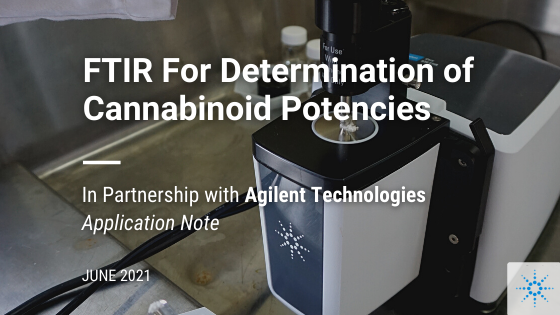Milling affects volatile compound recovery in functional mushroom extracts

Milling affects volatile compound recovery in functional mushroom extracts
Introduction
Fritsch milling equipment is an alternative to uncontrolled milling for sample preparation. Here we show a general method and assay for volatile constituents of functional mushroom extracts can be dramatically affected by milling conditions.
Hand grinders, food processors, coffee grinders, and other milling methods with limited control settings are standard in laboratories. However, many biomolecules of interest are labile and could be consumed during these processes. Therefore, instruments that provide little control of milling parameters may yield inaccurate results for compound discovery and quantification. We investigated whether particle size, mill time, and blade speed influence analyte recovery and subsequent measurement of compound concentration in functional mushrooms. We used Lion’s Mane (Hericium erinaceus) as the test substrate and a Fritsch P11 bladed mill to precisely control the various milling factors. Using the most abundant components of these mushrooms (leucine, myrcene, alpha-hydroxyisobutyric acid, 2-acetylbutyrolactone, 2-diethylaminoethyl acetate, and mannitol), we monitored their concentration resulting from various milling procedures.
Experimental
Lion’s Mane mushroom extracts were prepared through a simple sample preparation and extraction analytical workflow. Experimental variables were minimized to emphasize differences in milling conditions. The extracts were surveyed by GCMS for compound discovery and quantification.
Sample Preparation
Vacuum-dried whole Lion’s Mane mushrooms were donated by Nammex (Gibsons, BC). Whole, dried, Lion’s Mane mushrooms were weighed, sectioned using a razor, milled using a Fritsch P11 bladed mill, and then run through a 7mm particle filter. Batches of material were milled at various rates programmed into the P11 mill (see milling parameters in Table 1). An aliquot of each batch of milled material was taken for particle size analysis and a separate aliquot was taken for liquid extraction.
Extraction
Milled Lion’s Mane (1.0g) was weighed into 20mL scintillation vials. The extraction was performed with 20.0 mL of a 1:1 mixture of HPLC grade methanol and deionized water containing 0.5% (v/v%) formic acid (Fisher Optima) at room temperature for 3 hours. The extracts were decanted, and an aliquot was filtered with 0.20 µm Nylon syringe filters into glass vials for analysis.
Table 1. Milling parameters for sample preparation experiments on Lion’s Mane
| Conditions | Mill Speed (RPM) | Mill Time (s) | Replicates |
| Slow-Short | 2000 | 30 | 3 |
| Slow-Mid | 2000 | 60 | 3 |
| Slow-Long | 2000 | 90 | 3 |
| Mid-Short | 5000 | 30 | 3 |
| Fast-Short | 8000 | 30 | 3 |
GCMS Analysis
The samples were analyzed by GCMS (Agilent Intuvo 9000 GC, 5975 MSD) using an oven ramp program designed to survey a broad range of analytes (Table 2). The injection volume was 1.0 µL and the GC column used was an HP-5ms ultra inert 30 m fused silica column. Suitable compounds were extracted from the GCMS raw data and identified using the Agile 2 peak identification algorithm. Compound fragmentation patterns, extracted ion areas, and retention times were extracted using MS-DIAL and assigned through comparison to our proprietary spectral database.
Results
Figure 1. Molecules recovered from extraction after milling at three different speeds programed into the P11 mill. Mill time fixed at 30 sec.
Figure 2. Molecules recovered from extraction after milling for different time periods. Mill speed fixed at 2000 RPM
Figure 3. The top molecules identified at all mill times and speeds. Here we show their concentrations at three mill times at 2000 rpm.
Figure 4.The top molecules identified at all mill times and speeds. Here we show their concentrations at three mill speeds for 30 seconds.
Conclusions
The experiments above demonstrate that precise control of mill conditions is important in mushroom sample preparation. Lion’s mane mushroom samples were milled with a Fritsch P11 mill set to different parameters of mill speed and time, and then underwent liquid extraction. The analyte composition of the extracts was then identified as shown in figures 1 and 2. Our results show that mill speed and time correspond to changes in mushroom extract analyte composition. We could show that mill settings had a direct influence on analyte recovery from the mushroom (figures 3 and 4). 4-guanidinobutyrate is found in edible mushrooms and is a known fungal metabolite in many species.1,2 Hericium erinaceus is known to have 3.3% of its protein content made up of L-isoleucine.3 Meanwhile, to the best of our knowledge, esculin and Ophiopogonoside A have not yet been described in these mushrooms. Among these compounds, lower mill speeds and shorter mill times corresponded to increased recovery. This indicates a Fritsch P11 mill would allow researchers to optimize their sample prep to ensure the highest yields.
References
1. PubChem Compound Summary for CID 500, 4-Guanidinobutyric acid. National Center for Biotechnology Information https://pubchem.ncbi.nlm.nih.gov/compound/4-Guanidinobutyric-acid (2022).
2. Li, J., Wu, H., Wang, L., Huang, Y. & Wang, L. Key taste components in two wild edible Boletus mushrooms using widely targeted metabolomics. Biochemical Systematics and Ecology 96, 104268 (2021).
3. Aparicio-Razo, M. & González-Pérez, M. ANALYSIS OF BIOMOLECULES OF THE FUNGUS HERICIUM ERINACEUS THROUGH THE THEORY OF ELECTRON TRANSFER OF QUANTUM CHEMISTRY AND ITS RELATIONSHIP WITH THE PRIMARY AMINO ACIDS. 9, 139–147 (2020).
Supporting
Table 2
| Name | Abundance in all experiments |
| 4-guanidinobutanoate | 5261052.235 |
| L-leucine | 1110933.091 |
| 3-amino-1,2-propanediol | 425572.75 |
| esculin | 345937.8184 |
| L-beta-homoleucine | 326320.0547 |
| tetrahydrofuran | 272256.9375 |
| dodecamethylcyclohexasiloxane | 270464.666 |
| cadaverine | 244824.6094 |
| ophiopogonoside A | 243731.9395 |
| hexazinone | 240513.2041 |
| citropen | 223926.4727 |
| 4-oxo-3-phenyl-6-propyl-4h-chromen-7-yl acetate | 195539.752 |
| L-isoleucine | 183783.2715 |
| dehydroandrographolide | 181819.543 |
| N,N-dibutylnitrous amide | 176344.2031 |
| myrcene | 134515.9443 |
| 4-hydroxybenzaldehyde | 122221.9766 |
| alpha-hydroxyisobutyric acid | 120649.4336 |
| N,N’-dicyclohexylthiourea | 112791.6953 |
| 2-hydroxybutyric acid | 94918.07813 |
| 2-((7-acetamido-1,2,3-trimethoxy-9-oxo-5,6,7,9-tetrahydrobenzo[a]heptalen-10-yl)amino)-n-(4-(5-(methoxymethyl)-1h-1,2,4-triazol-3-yl)phenyl)acetamide | 90886.3457 |
| cyclododecanol | 86997.33765 |
| 6-methoxy-4-methyl-2h-chromen-2-one | 82209.84376 |
| phenaceturic acid | 66982.5 |
| 1-myristoyl-2-hydroxy-sn-glycero-3-phosphate (sodium salt) sodium salt | 66748.45361 |
| 1-[(2e,4e)-6,7-dihydroxy-2,4-octadienoyl]prolyl-n-methylvalyl-n2-methylalaninamide | 62692.64649 |
| butanal | 54538.58203 |
| pyruvaldehyde | 53863.91406 |
| 2-methylbutyrylglycine | 53269.54297 |
| cinchonine | 52899.89649 |
| sinapic acid | 48724.09424 |
| diffractaic acid | 44918.83301 |
| l-2,3-diaminopropionic acid | 38335.02344 |
| [(2r,3r,4s,5r,6s)-3,4,5-tris(acetyloxy)-6-[(7-tert-butyl-5,8-dihydroxy-1,4-dioxo-3-{[(2s,3r,4s,5r,6r)-3,4,5-tris(acetyloxy)-6-[(acetyloxy)methyl]oxan-2-yl]sulfanyl}-1,4-dihydronaphthalen-2-yl)sulfanyl]oxan-2-yl]methyl acetate | 36675.40137 |
| pseudolaric acid a-o-beta-d-glucopyranoside | 31419.36426 |
| dl-coniine | 28856.19677 |
| ganoderol b | 28060.43164 |
| cyanate | 25044.28906 |
| allo-threonine | 23335.97266 |
| 4-acetamidobutanoate | 22061.03906 |
| nerolidol | 22051.06641 |
| pseudopyronine b | 21448.30469 |
| dioctyl phthalate | 21001.31372 |
| daphnetin | 20752.16382 |
| mannitol | 19570.46094 |
| protocetraric acid | 18046.0166 |
| octylamine | 16933.83765 |
| n-acetyl-b-alanine | 16850.11523 |
| n-octyl-2-pyrrolidone | 16671.71484 |
| L-norleucine | 14774.7041 |
| flucarbazone | 14044.42285 |
| isoamylamine | 12573.57324 |
| bis(2-ethylhexyl) phthalate | 12386.82568 |
| 2-amino-3-methylvaleric acid | 11756.65332 |
| formiminoaspartate | 11709.78027 |
| 1-dodecyl-2-pyrrolidinone | 11695.82129 |
| sakuranetin | 11362.86719 |
| 3-methyl-2-oxobutanoate | 11235.17969 |
| 1-dodecanamine | 11142.62036 |
| isocucurbitacin b | 10466.6709 |
| guanidine | 10229.51465 |
| lutein | 9612.479492 |
| benzoic acid | 9459.237305 |
| lacosamide | 8988.265625 |
| dimethyl malate | 8386.848145 |
| 1,2-dilauroyl-sn-glycero-3-phosphate monosodium salt | 5801.692871 |
| norfluoxetin | 5688.64502 |
| metformin | 5674.167969 |
| loureirin a | 5657.355713 |
| trimethylamine | 5535.165039 |
| mexiletine acetate | 5474.612305 |
| 1-myristoyl-2-hydroxy-sn-glycero-3-phosphoethanolamine | 5455.387695 |
| norfluoxetine | 4984.3125 |
| dl-norgestrel | 3903.630127 |
| aminoadipic acid | 3554.445068 |
| ethanolamine | 2852.979736 |
| diisopropyl phthalate | 2370.876465 |
| 4-oxobutanoate | 1833.481812 |
| 1,5-diaminopentane | 268.3061523 |





